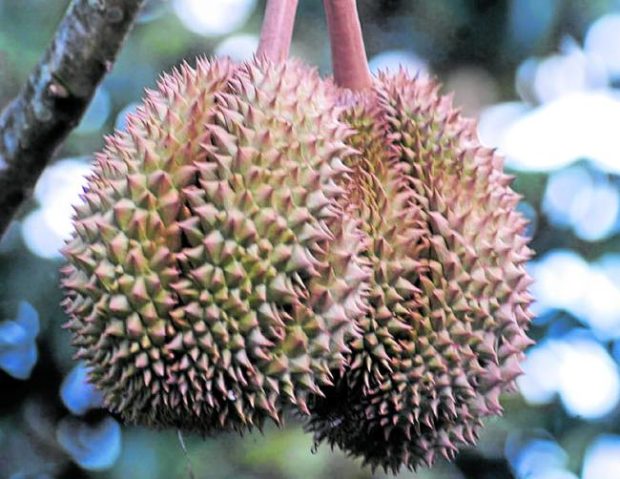Smell of success: PH durian soon exported to China

GROWING MARKET | The local harvest meets the standards of the world’s biggest importer. (INQUIRER STOCK PHOTO)
MANILA, Philippines — The overpowering smell of Davao’s famous durian may soon reach the biggest market for the pungent fruit.
Chinese Ambassador to the Philippines Huang Xilian on Wednesday said his country, the biggest importer of the fruit, had approved the entry of fresh durian from the Philippines.
Huang cited the result of an assessment conducted by a team of experts recently organized by his embassy. The team went to Davao Region for a market access investigation.
“They successfully completed the risk assessment of the orchard harvesting, fruit packaging, pest monitoring, chemical control, COVID-19 prevention, and traceability system of durian in this area,” the diplomat said in a post on his Facebook page.
Boon to farmers
According to Huang, China in 2021 imported 822,000 tons of durian worth $4.21 billion, 82.4 percent more than the previous year’s volume.
In the first half of 2022, total shipment grew by another 60 percent, making durian the most sought-after imported fruit in the Chinese market, he added.
Huang said the durian from Davao Region was found to be of a high, good-tasting quality that Chinese consumers would enjoy.
“As one of the most lucrative agricultural products, the entry of high-quality fresh durian from the Philippines into China with a population of 1.4 billion will benefit hundreds of thousands of Philippine fruit farmers and greatly increase the income of local growers in the Mindanao area,” he added.
Top 10 producers
“We also expect more fruits and agricultural products to be exported to China, as the trade relations between China and the Philippines grow even closer,” he said.
The Department of Agriculture (DA) has been urging durian growers to increase production, citing the growing demand in the export market.
From 2014 to 2021, the Philippines consistently landed in the Top 10 list of fresh durian exporters, according to the DA.
Durian is grown in 47 provinces in the country, but Davao Region accounts for 78 percent of the total harvest (in 2020) and half of the region’s production comes from Davao City. The local varieties include chanee, monthong, alcon fancy, arancillo, and puyat.
According to the Philippine Statistics Authority, local durian production reached 78,816 metric tons (MT) in 2020, down 0.6 percent from 79,284 MT in 2019.
In 2020, there were 1.3 million durian-bearing trees occupying a total land area of 16,582 hectares.
That year, the Philippines exported durian to Hong Kong, Japan, Korea, Malaysia, Saudi Arabia, Singapore, Thailand, Qatar, and the United States. The first shipment to Australia was made in 2021.
Grown in other parts of Southeast Asia, it is often described as the fruit that “smells like hell but tastes like heaven.” But it is no less than the “king of fruits” for those who relish its sweet, creamy flesh.
Because of the odor, it is not unusual for the fruit to be banned in hotel rooms and public transport in some countries.
—WITH A REPORT FROM INQUIRER RESEARCH
Source: psa.gov.ph, ispweb.pcaarrd.dost.gov.ph
RELATED STORIES
Spike in demand: stinky durians enjoy online virus boom
Royalty, farmers tussle over Malaysia’s famous Musang King durians